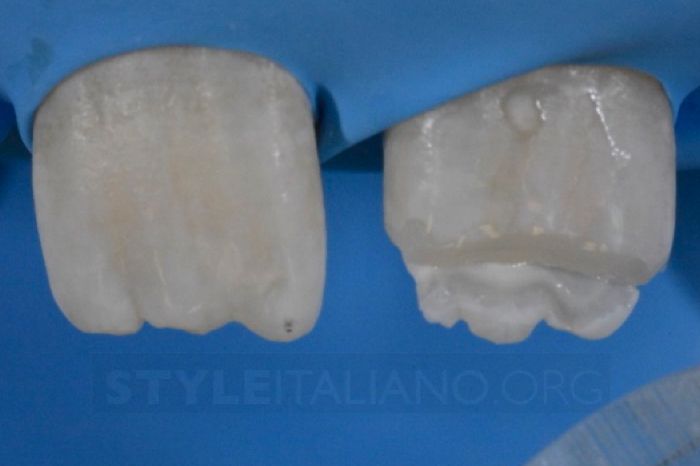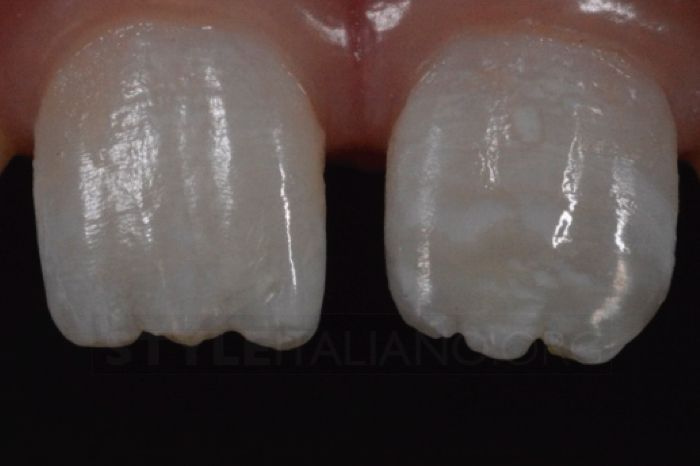Treatment of Crown Fractures within Enamel and Dentin
Machine translation
Original article is written in RU language (link to read it) .
Clinical case: tooth crown fracture. What can we do if the broken-off part of the tooth is incomplete or non-viable? After all, using such a broken-off tooth part can help reduce the time and physical costs of treatment. A tooth crown fracture requires immediate and, importantly, quality dental treatment.
Systematizing all knowledge about direct restorations can be helped by the online course Direct Restoration. All Inclusive.
Direct Composite Restoration
In the case of a tooth crown fracture in a young patient, good results are obtained by using the broken-off part of the tooth and/or direct composite restoration or an inlay made of composite or ceramic. If a part of the tooth is missing, preference is given to direct composite restoration, especially in young patients, because composite is better suited for final processing and correction.
Using the broken-off part of the tooth and direct composite restoration

Photo 1
Fracture of the crown of tooth 2.1 within the enamel and dentin in a nine-year-old boy. The pulp's response to irritants is positive.
The main disadvantage of using the chipped part of the tooth compared to direct composite restoration is the unreliable adhesion of the chipped fragment to the remaining part of the tooth. Some authors refer to poor aesthetic results of direct composite restorations in tooth crown fractures, justifying the reuse of the chipped part of the tooth. However, excellent aesthetic results can also be achieved using composites.
The only argument "for" using the broken-off part of the tooth is the reduced time expenditure. After all, a full composite restoration of a front tooth takes at least 1 hour assuming patient cooperation, which is quite rare when working with children. Whereas using the broken-off part of the tooth reduces the working time to 15 minutes.

Photo 2
The broken-off part of the tooth. We checked the compatibility of the broken-off part of the tooth with the remaining part. For better adhesion, do not modify the surfaces of the remaining tooth and the broken-off part.
Over the phone, we asked the mother to keep the broken-off part of the crown in water. The fitting of the broken-off part to the tooth was conducted, and, although it was not perfect, it simplified the work. The main goal of treatment for a fracture of the crown of a front tooth within the enamel and dentin is to maintain the viability of the pulp. The first thing to do is to treat the dentin with a 2% solution of chlorhexidine and seal the dentinal tubules with a restoration as quickly as possible.

Photo 3
The attached fragment was thin, the rest of the tooth was restored with composite. The role of the preserved fragment should not be underestimated, as almost the entire original shape of the tooth was preserved, and there was no need for wax-up or impressions.
If the broken part of the tooth is incomplete, the remaining part of the crown (in this case, the buccal wall) is restored with composite.
Treatment stages:
- Cleaning the broken part of the tooth and the remaining part of the crown with 2% chlorhexidine solution.
- Treating the cutting edge (only buccally in this case) with a disc (Sof-Lex orange, 3M).
- Etching for 30 seconds on enamel and 15 seconds on dentin with 37% phosphoric acid.
- Reusing 2% chlorhexidine to inhibit metalloproteinases.
- Applying adhesive.
- Fixing the fragment using a small amount of composite.
- Polymerization.

Photo 4
Restoration: dentin layer applied, white spots placed under the enamel layer with a thickness of 0.5 mm. Grinding, polishing.

Photo 5
The final restoration demonstrates excellent compatibility of the composite with the chipped part of the tooth, the tooth is vital.

Photo 6
Clinical picture before and after. It is necessary to monitor the vitality of the pulp every six months.
The risk of pulp necrosis in cases of crown fractures within the enamel and dentin, regardless of the crack width and type of treatment, is 1-6%. Therefore, regular checks of pulp vitality should not be neglected.
More details on this topic in the webinar Direct restoration of anterior teeth: from Class IV to veneers. Stratification technique.
http://www.styleitaliano.org/